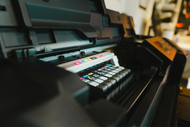How Digital Label Printing is Revolutionizing the Packaging Industry
25th Jul 2025
In today’s fast-paced and ever-evolving market, packaging is more than just a protective cover for products—it’s an essential part of a brand’s identity and consumer experience. From eye-catching designs to informative labels, packaging is often the first point of contact between a company and its customers. As consumer expectations rise and industries demand greater flexibility, the packaging world is undergoing a transformation, and at the forefront of this change is digital label printing.
Digital label printing is revolutionizing how businesses approach packaging by offering faster turnaround times, cost efficiency, and unparalleled customization options. Unlike traditional printing methods such as flexography, digital printing eliminates the need for complex plate changes, which can be time-consuming and expensive. With digital printing, businesses can produce high-quality, custom labels in smaller batches, enabling them to respond quickly to market demands, trends, and seasonal shifts.
As industries continue to focus on personalization and consumer engagement, digital label printing is playing a pivotal role in meeting these expectations. Whether it’s a limited-edition product, a promotional run, or a batch of products with varying information, digital printing empowers businesses to provide tailored, high-quality labels with minimal lead time. This blog explores the various ways in which digital label printing is changing the packaging landscape, focusing on its impact on production processes, sustainability, and the consumer experience.
From streamlining production to enhancing packaging appeal, digital label printing is reshaping the packaging industry for the future. Let’s dive into the ways this technology is changing the way businesses think about labels and packaging.
Impact on Consumer Packaging
Digital label printing has significantly impacted the consumer packaging landscape, enabling businesses to meet evolving customer expectations while staying ahead of industry trends. One of the key ways it has revolutionized packaging is through its ability to support customization and personalization, which are increasingly important to modern consumers. As the demand for unique, limited-edition, and region-specific products rises, digital printing provides the flexibility needed to deliver exactly what consumers want.
With digital label printing, companies can produce high-quality custom labels without the need for expensive printing plates or long lead times. This makes it easier for businesses to adapt quickly to changing consumer preferences or market conditions. For example, limited-edition runs or promotional packaging can be printed with unique designs or product information to appeal directly to consumers’ desires for novelty and personalization. This trend has been particularly prevalent in industries like food and beverage, cosmetics, and health products, where labels often carry a strong emotional or personal connection with the consumer.
Beyond just aesthetics, digital label printing also plays a crucial role in addressing the need for more accurate and timely information. With direct thermal labels for sale or thermal transfer labels for sale, brands can print labels with variable information like expiration dates, batch numbers, or product variants, making packaging more informative and transparent. This helps meet regulatory requirements, increases consumer trust, and fosters brand loyalty.
Additionally, digital printing offers the ability to print smaller batches efficiently, allowing businesses to avoid waste. This is particularly important in today’s environmentally conscious market, where consumers are becoming more aware of sustainability and brands are expected to reduce their environmental footprint. The ability to buy color label printers online and produce smaller runs helps businesses cut down on excess inventory and reduce packaging waste, supporting more sustainable business practices.
Furthermore, digital printing technology enables brands to integrate packaging with smart technologies like QR codes and augmented reality. This enhances the overall consumer experience by giving customers access to additional product information, promotional offers, or interactive content directly from the label. This integration of technology not only increases consumer engagement but also adds an innovative touch to the packaging, making it stand out in a crowded marketplace.
How Digital Label Printing Enhances Packaging Design
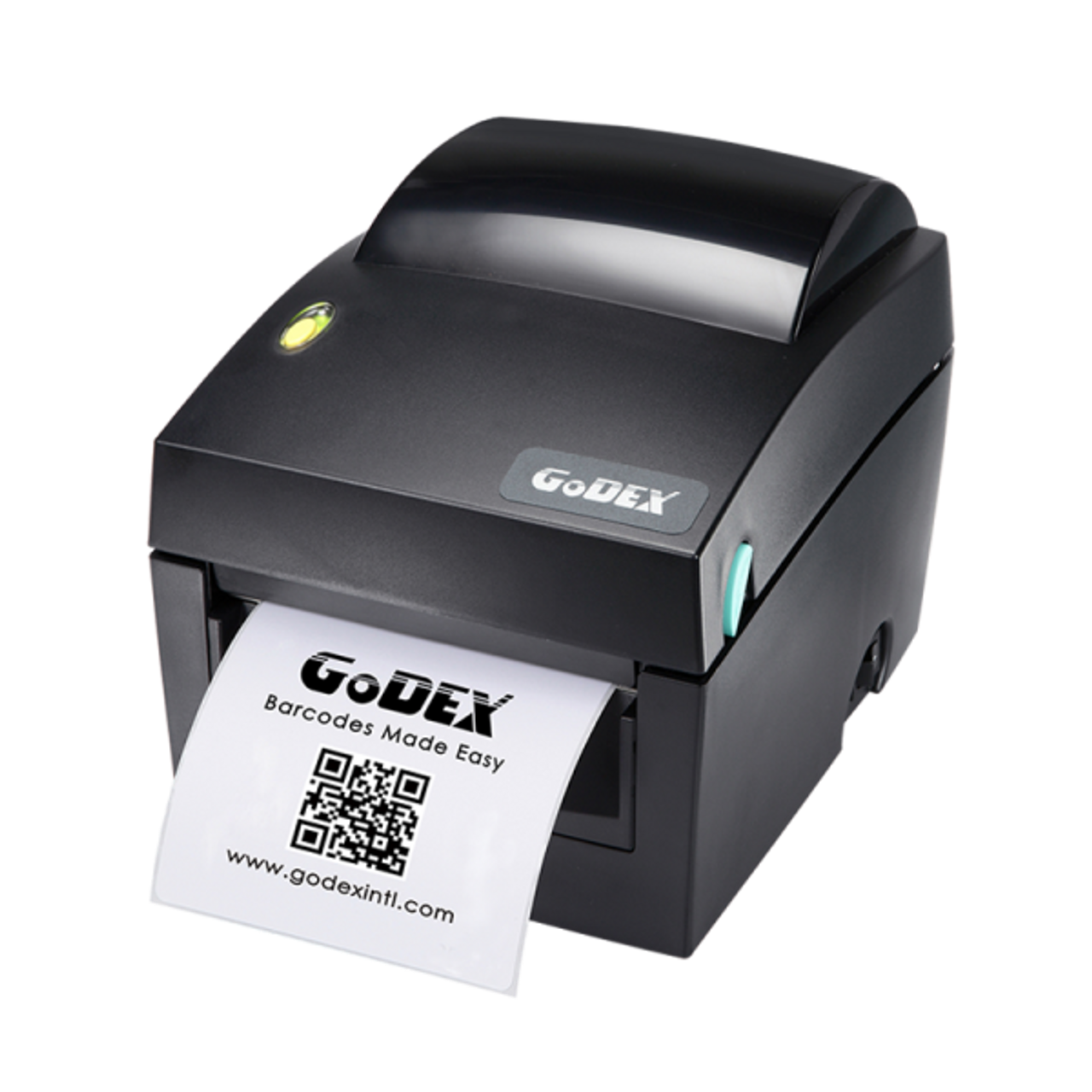
Digital label printing is transforming the way packaging designs are conceptualized, created, and executed. The versatility and flexibility that digital printing offers allow designers to experiment with new ideas, materials, and printing techniques that were previously difficult or impossible with traditional methods. Here’s how digital printing enhances packaging design and why it’s quickly becoming a go-to solution for innovative businesses.
1. Freedom of Design Without Constraints
One of the primary advantages of digital label printing is its ability to produce intricate and detailed designs without the limitations of traditional printing methods. Digital printers allow for full-color printing on various label materials, enabling businesses to create vibrant, complex, and eye-catching designs with greater accuracy. For instance, with thermal label printers for sale, businesses can print labels that include high-definition graphics, logos, and even fine text details that might be challenging to reproduce with traditional processes.
This ability to produce high-quality labels without being constrained by printing plates opens up new possibilities for branding and marketing. Brands can experiment with new patterns, textures, and colors to create packaging that stands out on store shelves and resonates with consumers. This level of creative freedom is a game-changer, especially for businesses looking to differentiate their products in competitive markets.
2. Shorter Turnaround Times for Creative Concepts
Traditionally, label design involved long setup times, especially when creating prototypes or testing new concepts. With digital label printing, companies can quickly print labels in small batches or even on demand. This makes it easier to test out different designs, tweak them based on feedback, and produce new labels faster than ever before. Whether it’s testing seasonal designs, limited edition runs, or custom products, digital printing allows businesses to move quickly from concept to production.
For businesses seeking to stay ahead of trends and make real-time changes to packaging, digital printing is a vital tool. With a direct thermal label printer, companies can create unique designs without the need for significant investment in traditional printing materials, thus speeding up the process from concept to shelf.
3. Enhanced Customization for Personalized Experiences
Today’s consumers are increasingly seeking personalized experiences, and digital label printing enables businesses to deliver exactly that. With digital printing technology, labels can be tailored for individual customers, locations, or events, allowing for a unique product offering. Whether it’s printing special messages, changing graphics for different regions, or even customizing packaging for specific events or holidays, digital printing provides businesses with the ability to create labels that reflect their customers’ preferences.
For instance, premium topcoated direct thermal labels or custom thermal transfer labels can be used to create unique designs that appeal to a specific target market, making products feel more exclusive and personalized. Personalization is not just about aesthetics; it can also involve customizing the information printed on labels, like including batch codes, product details, or regional promotions that are relevant to a particular audience.
4. Increased Shelf Appeal
In a crowded marketplace, shelf appeal is crucial. With digital printing, businesses can print labels that are not only visually stunning but also functional, ensuring that their products stand out in both appearance and usefulness. Digital printing allows for labels with clearer, sharper images and text, ensuring that important product details are easily visible to consumers.
Labels printed with affordable blank inkjet labels or laser sheet labels for sale offer companies an opportunity to create clean, attractive packaging that engages customers. A visually appealing design, combined with useful information, can drive product sales by helping customers make quick, informed decisions.
5. More Flexibility in Label Shape and Size
In addition to design flexibility, digital label printing also allows businesses to experiment with different shapes and sizes. Custom die cuts can be easily incorporated into the label design, offering unique packaging that breaks away from traditional rectangular or square labels. This added flexibility makes it easier for businesses to create packaging that fits the form and function of their products while making them more recognizable on the shelf.
How to Maintain Your Digital Label Printer for Optimal Performance
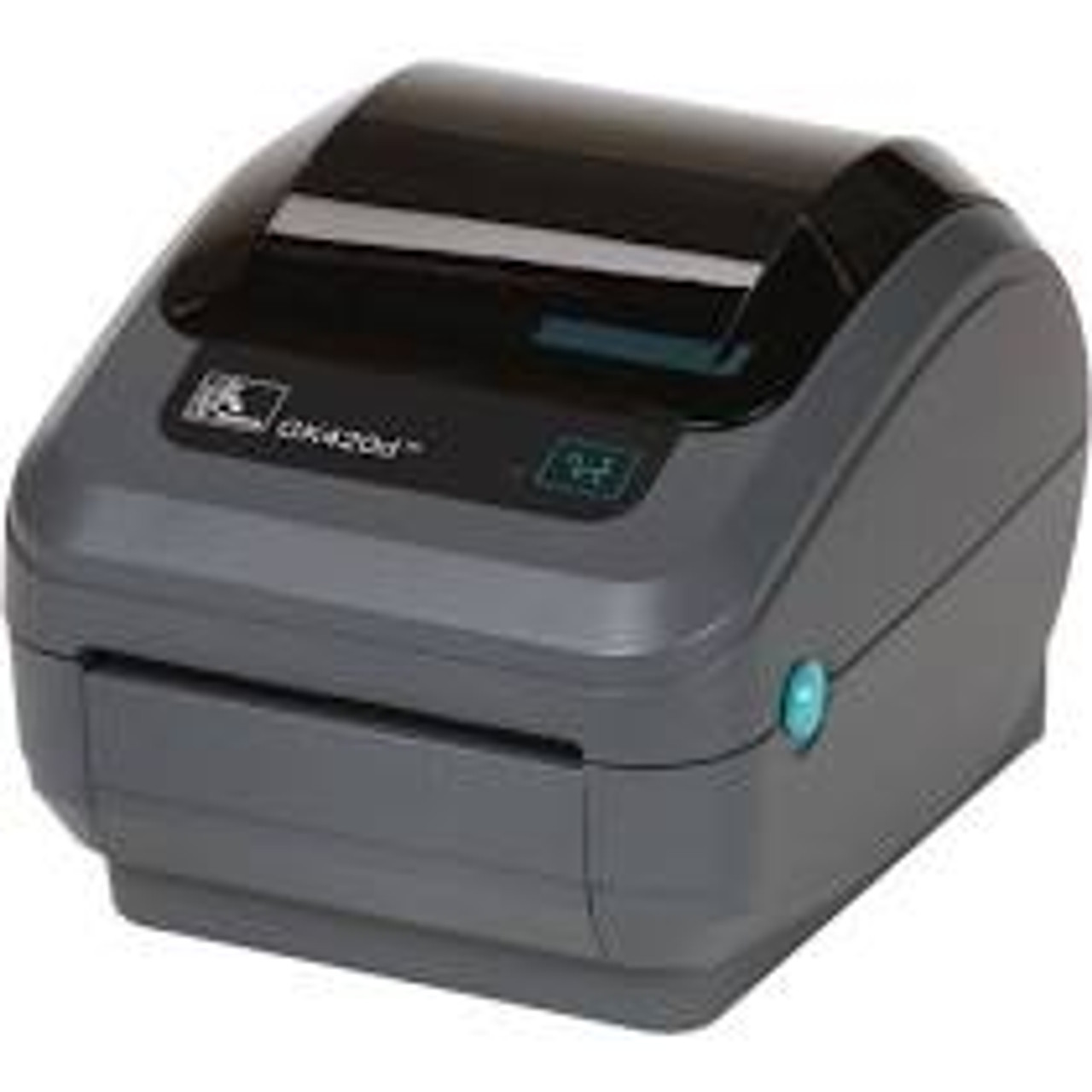
Proper maintenance is key to ensuring that your digital label printer continues to perform at its best, delivering high-quality labels consistently over time. Regular maintenance can help you avoid common printing issues like smudging, blurry prints, and misfeeds, while also extending the lifespan of your printer. Here are essential maintenance tips for keeping your digital label printer in top condition.
1. Regularly Clean the Printer
For printers that use thermal transfer labels for sale or direct thermal labels, make sure to clean the printhead regularly to prevent ink or toner buildup, which can cause smudging or streaking on your labels. Regular cleaning ensures optimal print quality and prevents long-term damage to the printer.
2. Replace Worn-Out Parts
Over time, certain parts of your printer, such as the printhead, rollers, and belts, can wear out and affect print quality. It's essential to inspect these parts regularly and replace them as needed. If you’re using a high quality thermal label printer or a thermal transfer printer, the printhead is particularly important, as it’s responsible for applying heat to the label material. A damaged printhead can result in faded or incomplete prints.
By replacing worn-out parts promptly, you can avoid costly repairs or the need to purchase a new printer prematurely. Most printers, such as the Afinia LT5C CMYK White Label Printer, have easily replaceable parts that you can access with minimal technical expertise.
3. Use High-Quality Ink and Labels
To avoid print quality issues and damage to the printer, always use high-quality ink, toners, and labels compatible with your printer. For example, premium topcoated direct thermal labels can improve print clarity and durability, especially in challenging environments. Low-quality labels or ink can cause smudging, clog the printhead, and result in poor adhesion.
When purchasing supplies, whether it’s buying ink cartridges for printers or thermal barcode printers online, be sure to choose reliable brands that meet your printer’s specifications. Using high-quality materials ensures that your labels print clearly and last longer, preventing the need for reprints or repairs.
4. Perform Regular Firmware and Software Updates
Keeping your printer’s firmware and software up to date is essential for maintaining compatibility with new label materials and ensuring smooth operation. Printer manufacturers often release updates that improve performance, fix bugs, or introduce new features. Make sure to check for firmware updates regularly and install them when they become available.
Additionally, if you’re using software to design your labels, ensure that it is compatible with your printer and regularly updated. Many businesses purchase best label design software for printers to enhance their label design process, but failing to update it can lead to compatibility issues with your printer.
5. Calibrate the Printer for Optimal Performance
Calibrating your printer helps ensure that it consistently prints at the correct temperature, speed, and alignment. Calibration is particularly important for printers that use thermal transfer ribbons or direct thermal labels for sale, as it ensures that the labels are printed with the appropriate intensity. Most modern printers offer automatic calibration features, but it's still a good idea to periodically check and adjust settings for optimal performance.
The Future of Digital Label Printing in Packaging
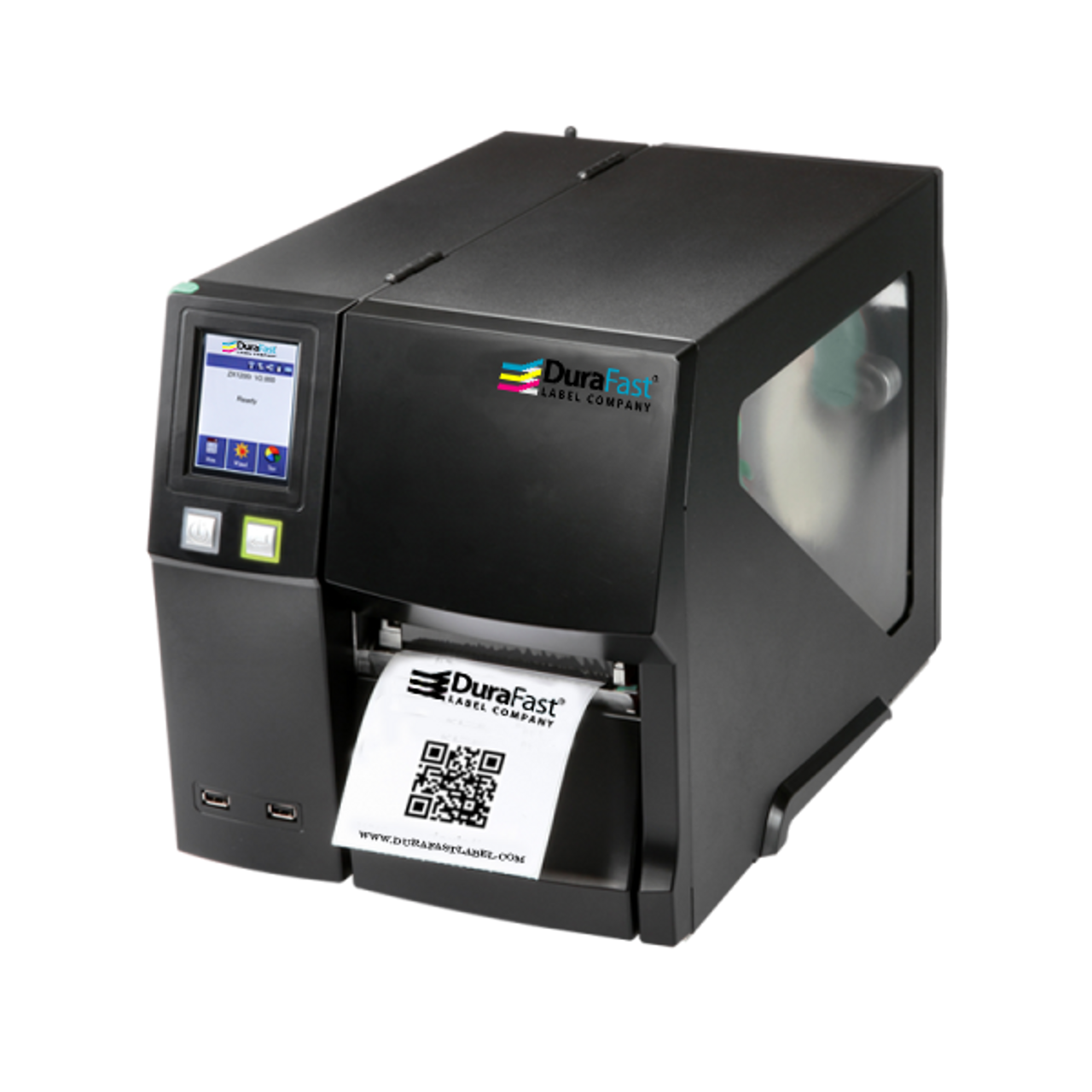
The future of digital label printing in packaging looks incredibly promising, with new advancements in technology continually enhancing production efficiency, customization options, and overall sustainability. As consumer demand for personalized products grows, digital printing is poised to become even more integral to the packaging industry. Here’s a look at some of the key trends and developments shaping the future of digital label printing.
1. Enhanced Customization and Personalization
One of the most exciting aspects of digital label printing is its ability to cater to growing consumer demand for personalized products. Digital printing allows businesses to create unique, high-quality labels with customized designs and variations for smaller production runs. Whether it’s for limited-edition products or personalized packaging, digital printing technology enables brands to quickly and efficiently produce unique labels without the cost and waste typically associated with traditional printing methods.
Printers like the Godex ZX1200i 4 Thermal Transfer Barcode Printer and the Zebra GK420D 203 DPI Desktop Direct Thermal Label Printer are examples of devices that support flexible label production, allowing businesses to easily adapt to changing customer preferences and market trends. As consumer expectations for individuality and customization increase, digital label printing is set to become even more important in helping brands meet those needs.
2. Improved Speed and Efficiency
Digital label printing technology is continuously improving, with advancements in printer speed and efficiency. The ability to produce high-quality labels quickly has significant benefits for businesses, particularly those involved in high-volume production. Digital printing eliminates many of the time-consuming steps associated with traditional label printing, such as plate-making and set-up, reducing turnaround times and production costs.
Models like the Godex EZ2250i 4 Thermal Transfer Barcode Printer, which offer high-speed printing at a competitive cost, are a testament to the evolving capabilities of digital label printers. As digital printers become faster and more efficient, they’ll continue to revolutionize the packaging industry by enabling quicker response times to market demands.
3. Sustainability and Eco-Friendly Printing
Sustainability is becoming a crucial factor in the packaging industry, with brands and consumers increasingly prioritizing eco-friendly products. Digital label printing offers several advantages in this area. For example, digital printers generate less waste compared to traditional printing methods since they don’t require the use of plates, and ink usage can be precisely controlled.
Moreover, digital printing allows for the use of non topcoated direct thermal labels and other materials that are more environmentally friendly. Companies that invest in sustainable printing practices and eco-friendly label materials are poised to appeal to the growing number of environmentally conscious consumers.
4. Integration with Other Packaging Technologies
In the future, digital label printing will continue to integrate with other cutting-edge packaging technologies, such as smart packaging and RFID (Radio Frequency Identification). By combining digital label printing with technologies like QR codes, barcodes, and NFC (Near Field Communication) tags, businesses can create packaging that provides added functionality and interactivity. This integration will help improve traceability, security, and customer engagement while enhancing the overall packaging experience.
5. Increased Accessibility for Small Businesses
As the technology for digital label printers becomes more affordable and accessible, small businesses are increasingly able to take advantage of its benefits. Previously, digital printing technology was mostly reserved for large corporations with significant budgets. However, printers such as the Godex DT4X 4 Direct Thermal Barcode Printer and the Zebra GK420D are now available at price points that make them accessible to smaller businesses, allowing even smaller companies to produce high-quality labels at a fraction of the cost of traditional printing methods.
How to Choose the Right Digital Printer for Your Business
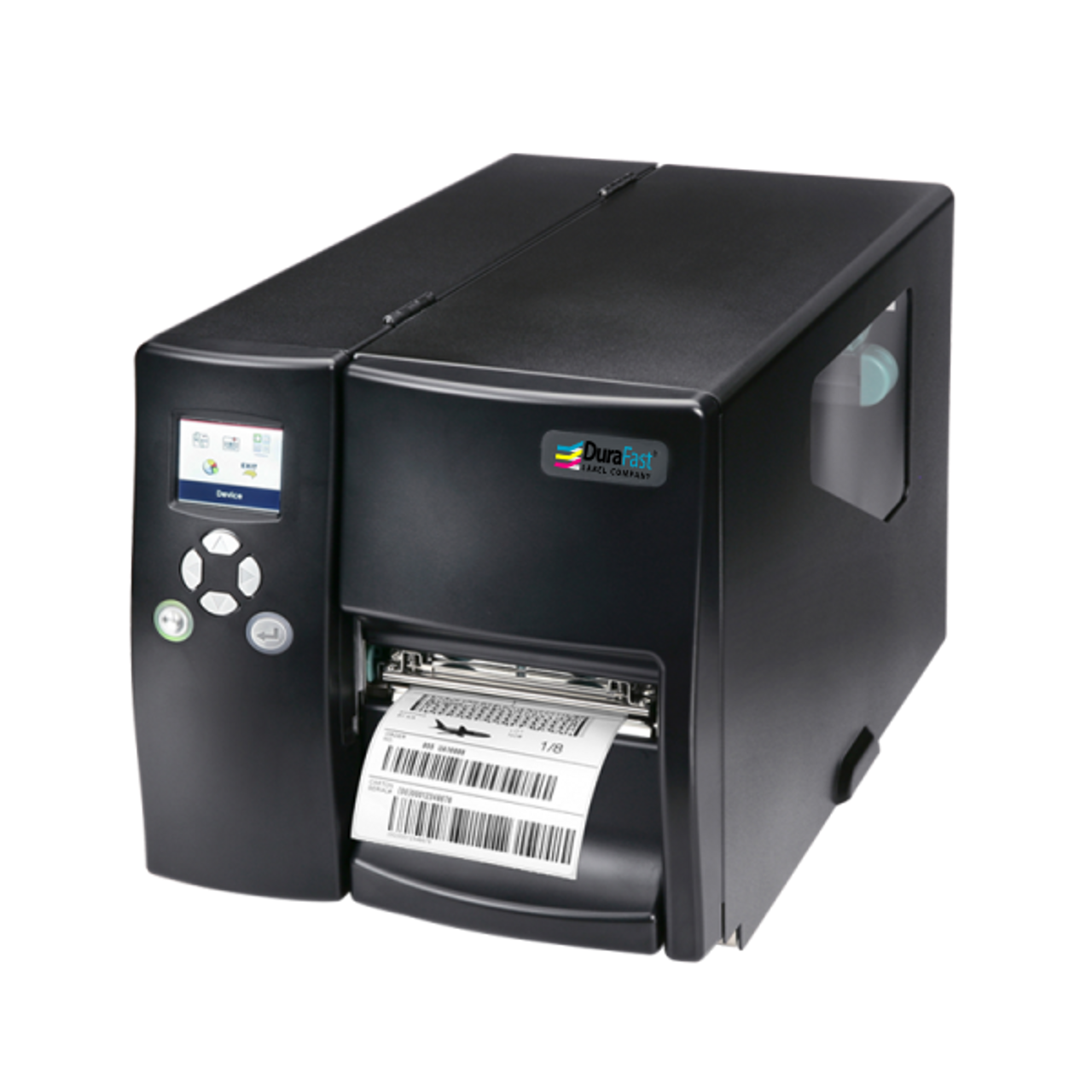
1. Printer Technology: Thermal vs. Inkjet vs. Laser
One of the first decisions you'll need to make is which type of printer technology suits your needs: thermal, inkjet, or laser.
- Thermal printers, such as the Godex DT4X 4 Direct Thermal Barcode Printer, are highly efficient for printing high-quality barcodes and labels with minimal maintenance. These printers are ideal for businesses that require fast, cost-effective printing of labels in bulk. Direct thermal and thermal transfer printers can also be used for printing custom thermal transfer labels that are durable and resistant to harsh conditions.
- Inkjet printers offer more flexibility in printing color labels with intricate designs and are perfect for applications where vibrant color output is needed. If your business requires high-quality color labels for branding purposes, consider models like the Afinia LT5C CMYK White Label Printer, which prints vivid colors and can handle both small and medium production runs.
- Laser printers, like the ISYS Apex 1290 Color Laser Label Press, are known for their high speed and precision, making them a good choice for large volume label printing where efficiency and accuracy are paramount.
2. Printing Speed and Volume
Another important factor is the printing speed and volume that your business requires. If your operation involves high-volume printing, it’s essential to choose a printer that can handle larger print runs without compromising on speed or quality. The Godex ZX1200i Thermal Transfer Barcode Printer, for instance, offers high-speed printing up to 10 inches per second, making it ideal for businesses with large labeling needs.
On the other hand, if your business requires more frequent, smaller runs, a slower printer may suffice. Smaller, desktop models such as the Zebra GK420D 203 DPI Desktop Direct Thermal Label Printer are perfect for businesses with low to medium printing demands.
3. Label Size and Material Compatibility
Consider the range of label sizes and materials that your business needs. Different printers are designed to handle varying label sizes, and some may be better suited for specialized materials. If your business needs to print labels for products of different sizes, ensure that the printer you choose can accommodate a variety of label formats.
Additionally, ensure that the printer is compatible with the label materials required for your products. For instance, if you need to print thermal transfer labels for sale, make sure the printer can handle this type of material, which often requires special ribbon compatibility. Premium topcoated direct thermal labels may be necessary for certain applications that require additional durability.
4. Ease of Use and Software Compatibility
Digital printers often come with advanced software for designing and managing label production. The software should be user-friendly, especially if your staff does not have a lot of technical experience. Some printers come with their own label design software, while others are compatible with third-party applications such as best label design software for printers.
Additionally, ensure the printer is compatible with your existing system. Many modern printers offer integration with common business software, such as inventory management and shipping systems, which can streamline your production process.
5. Budget and Total Cost of Ownership
While initial purchase price is important, it’s also essential to consider the total cost of ownership over time. Look at factors such as the cost of ink or toner, the lifespan of printheads, and maintenance requirements. Models like the Godex EZ2250i 4 Thermal Transfer Barcode Printer offer affordable operation costs without sacrificing performance, making them a good option for businesses on a budget.
Embrace the Future of Packaging with Digital Label Printing
With the rise of consumer personalization and customization, digital label printing for sale has become a vital tool for businesses looking to offer unique products with high-quality, tailored packaging. By utilizing printers like the Godex ZX1200i Thermal Transfer Barcode Printer or the Zebra GK420D 203 DPI Desktop Direct Thermal Label Printer, businesses can quickly adapt to changing market trends while maintaining cost-efficiency.
Moreover, digital printing technology offers significant advantages in terms of sustainability. Digital label printing minimizes waste by eliminating the need for plates and reducing excess ink usage, thus making it a more eco-friendly option compared to traditional methods. With growing consumer awareness about environmental impact, businesses that prioritize sustainability by choosing non topcoated direct thermal labels or other eco-friendly options will gain favor among consumers who value environmentally responsible practices.
In addition, the increasing accessibility of digital printing technology means that even small businesses can take advantage of these benefits. With affordable models such as the Godex EZ2250i 4 Thermal Transfer Barcode Printer, small enterprises can now produce high-quality, customized labels without the high upfront costs traditionally associated with large-scale production runs.
As the packaging industry continues to evolve, digital label printing will remain a cornerstone of innovation, offering companies a tool to enhance their branding, improve operational efficiency, and meet consumer expectations for both quality and sustainability. Whether you're looking to print custom thermal transfer labels or engage in high-volume production runs, there’s a digital printer out there that suits your specific needs and business objectives.
By investing in the right equipment, such as the Afinia LT5C CMYK White Label Printer or the ISYS Apex 1290 Color Laser Label Press, businesses can continue to stay ahead of the curve, offering unique, high-quality, and eco-friendly packaging solutions that will captivate and engage consumers.
For those interested in learning more or purchasing high-quality digital printers and labels, DuraFast Label Company offers a wide range of products and solutions designed to meet every business need. Whether you're looking for color label printers for sale or exploring options for thermal label printers for sale, DuraFast provides the tools to help you succeed. Visit DuraFast Label Company to discover how digital printing can elevate your business’s packaging and labeling needs.
